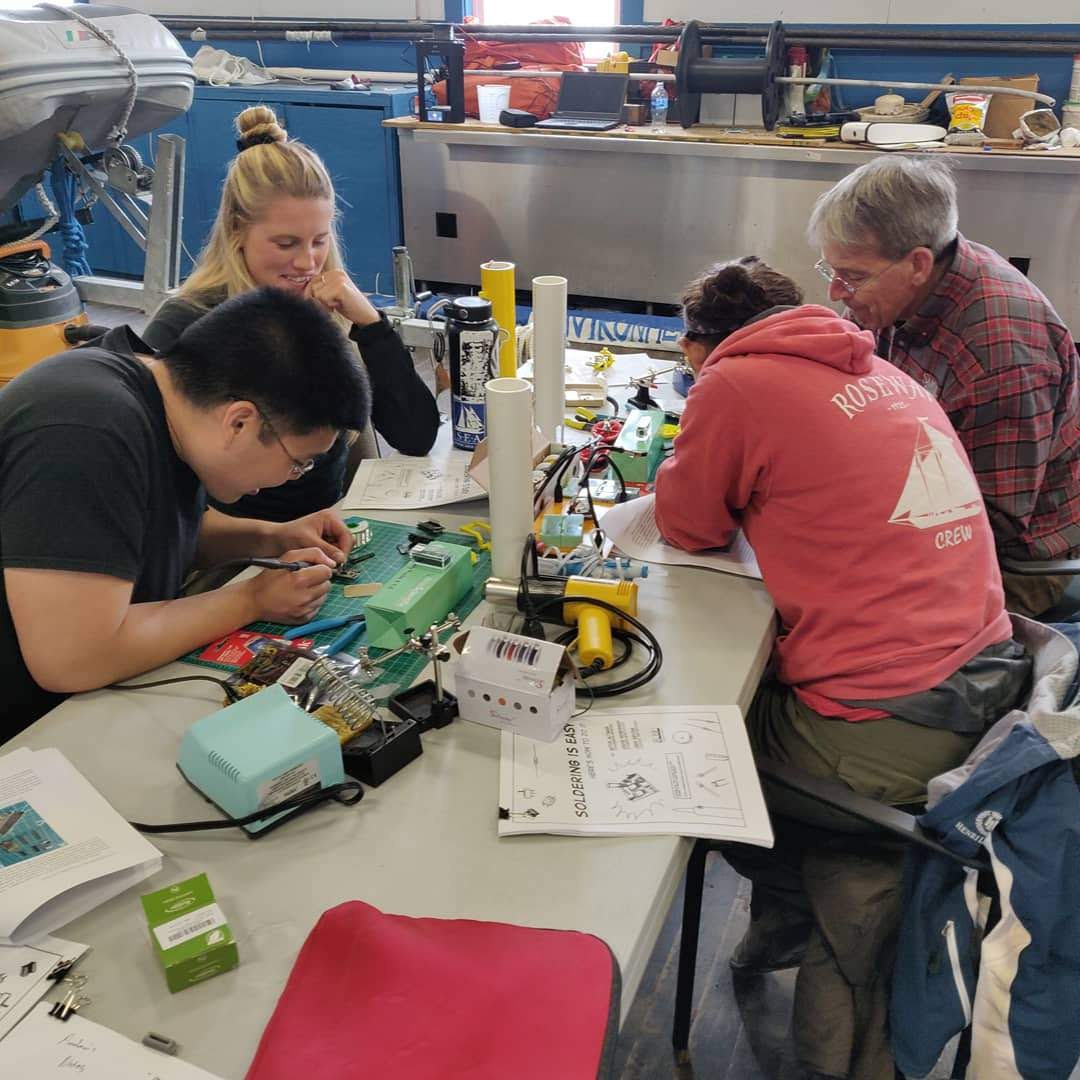
The goal of the OpenCTD student workshop is to provide high school or university students with a foundation in practical conservation technology by constructing an open-source oceanographic instrument. During this workshop, students will learn how to solder, build waterproof enclosures, code in the Arduino IDE, read data from and calibrate environmental sensors, and analyze environmental data produced from a scientific instrument that they built. Advanced students can expand upon the base OpenCTD, adding their own software, hardware, and sensors to customize the OpenCTD for their own needs.
Day 1 – construction of the sensor package, housing, and control unit
On the first day of the workshop, students will receive an introduction to the OpenCTD and, depending on access to an appropriate field site, have a change to see a completed OpenCTD in action and conduct an initial deployment. They will receive an introduction to solder and safe soldering practices. Students will then assemble the control unit of the OpenCTD, upload the Arduino software to the device, and confirm that the control unit is functioning properly. Students will also assemble the OpenCTD sensor package, building an array of three sensors to measure conductivity, temperature, and depth. Once the sensor package is tested in conjunction with the control unit, students will seal the sensors into a waterproof housing.
The epoxy used for potting the OpenCTD must cure for 24 hours before being submerged. Day 1 takes approximately six hours, depending on student experience.
Day 2 – completion of the CTD build, software programming and calibration, and wet test
On the second day, students will complete any tasks left incomplete from the first day. They will then complete the physical CTD build by installing the power supply, painting or otherwise decorating the housing, and installing deployment hardware. Once complete, students will review the OpenCTD source code and make any changes to the code to suite their particular use case. Students will then calibrate the temperature and conductivity sensors using standardized calibration solution and known temperatures. If sufficient time has passed, students will perform a wet test of the CTD housing, deploying the unit to 15 meters of depth without electronic components installed, to check for any leakage.
Day 2 takes approximately 4 hours, depending on student experience.
Day 3 – field expedition, data analysis, and data management
The third day is the capstone day for students. Depending on site availability, student will design a sampling regime to test hypotheses about their local waterways and then deploy their OpenCTD at those sampling sites. Students will then return to the classroom to analyze OpenCTD data using a pre-developed Excel spreadsheet that performs the necessary calculations to turn the raw CTD data into human-readable values. More advanced students can work through the underlying mathematics and develop their own R-code (or other common data-handling coding environments) to analyze data.
Students will then be introduced to ArcGIS Storymaps and given an opportunity to create a public-facing document of their data collection.
The timing of day 3 is highly dependent on availability of field sites and the complexity of the student’s sampling and analysis regime.
Alternative workflows
While the OpenCTD workshop is designed to be conducted over the course of three-days, each step of the build process has been compartmentalized into 45-minute to 1-hour units, so that the build process can be stretched out over several weeks if a 3-day block of time is not available. With advanced students who are already familiar with environmental sensing, coding, and soldering, an OpenCTD can be built in as little as 6 hours over two days.
Outcomes
At the conclusion of the workshop, students will have a firm understanding of environmental sensing as well as a suite of practical skills that are transferable to a variety of different disciplines and will have constructed their own oceanographic instrument which they can used for future student projects or as a component of a larger oceanographic or environmental science program.
 andrew.david.thaler
andrew.david.thaler
Discussions
Become a Hackaday.io Member
Create an account to leave a comment. Already have an account? Log In.